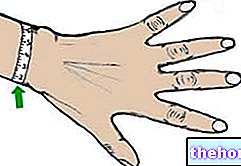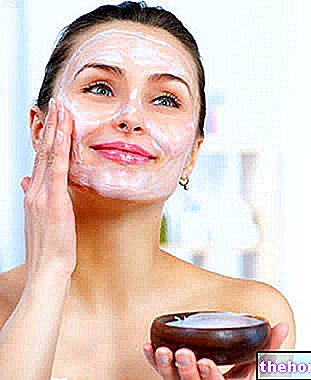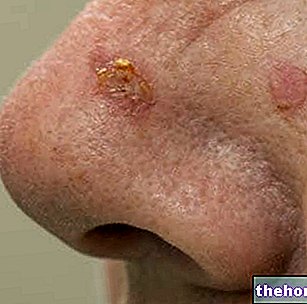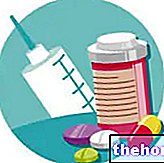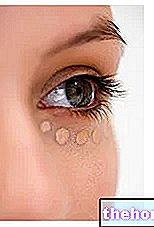What is Shea Butter
Shea butter is a mixture of fatty substances obtained from the seeds of Vitellaria paradoxa (or Butyrospermum parkii), a tree belonging to the Sapotaceae family. This tall woody plant - also known as the "tree of youth", in memory of its extraordinary regenerating properties - grows in the arid and endless landscapes of the sub-Saharan savannah.
The drug, from which the famous shea butter is obtained, consists of the seeds (2-3 for each fruit).

Production
According to the traditional production method, the fruits of the shea plant must be harvested from mid-June to mid-September. The seeds will then be freed from the pulp that surrounds them and will be subjected to a series of processes in order to obtain the butter. These operations consist of:
- Preventive boiling, roasting or fumigation of the seeds (this operation is optional);
- Drying in the sun which must last about a month;
- Crushing of the seed, crushing and grinding, until a pasty mixture is obtained;
- The paste obtained in this way is added with water. The mixture is then brought to a boil and then filtered.
At the end of all these procedures, an unrefined butter is obtained whose color can vary from white to yellow.
Currently, to speed up the production process, instead of manually, the butter is obtained by mechanical compression, or it is extracted through the use of suitable solvents.
Composition
The composition of shea butter is influenced by several factors. In fact, it can vary according to the conditions in which the plant grows, according to the period in which the fruits are harvested and according to the extraction method used.
However, like many other similar plant products, shea butter is mainly composed of a rich blend of fatty acids, such as:
- Oleic acid (39-68%);
- Stearic acid (22-50%);
- Linoleic acid (4-8%);
- Palmitic acid (3-12%);
- Arachic acid (0-3.5%);
- Alpha-linolenic acid (0-1.6%);
- Lauric acid (0-1.5%).
Other fatty acids included in the composition of shea butter are myristic acid, vaccenic acid, behenic acid, lignoceric acid and gadoleic acid.
Among the components of shea butter we also find fat-soluble vitamins with antioxidant action, such as provitamin A and E, which give it most of the precious virtues ascribed to it.
Property

In detail, shea butter is equipped with:
- Moisturizing properties;
- Nourishing properties;
- Emollient properties;
- Regenerating properties;
- Antioxidant properties.
The regenerating and antioxidant properties of shea butter make this product particularly appreciated in the world of anti-aging cosmetics.
Uses
As mentioned, given its composition and given its particular and numerous properties, shea butter is used both in food and in cosmetics.
Use cosmetics
Shea butter is used, both locally and internationally, in the treatment of chapped skin, dry hair and more generally to tone and soften the epidermis. For this reason it is part of the composition of many cosmetic products, such as soaps, ointments and various creams (nourishing, softening, emollient, anti-wrinkle, anti-stretch mark, anti-inflammatory, anti-aging skin, soothing, photoprotective and after sun).
Once spread on the skin, shea butter is quickly absorbed without leaving that unpleasant greasy feeling.
Used pure (from controlled and certified sources), shea butter can prove to be a very precious ally in case of:
- Dry skin
- Skin redness;
- Sunburns and burns
- Skin irritation;
- Dermatitis;
- Erythema;
- Stretch marks (when applied during pregnancy, shea butter appears to be able to prevent them from appearing);
- Prevention of breast fissures caused by breastfeeding;
- Irritation from diapers, shaving and hair removal.
At the same time, shea butter is able to protect the skin from solar radiation and is an excellent remedy for giving skin relief after exposure to the sun. However, in this regard, it is important to remember that in no case the shea should be used as a substitute for sunscreens.
In the trichological field it is used in the preparation of conditioners, to restore vitality to dry, frizzy and brittle hair. In this case, the product should be left on for a few minutes on damp hair, before rinsing it off with a generous wash.
At the same time, pure shea butter can be used on the hair as a real mask to be kept on for about 30 minutes. After this time you can proceed with the normal washing of the hair that will appear softer and more hydrated.
Shea Butter Online

An unrefined, pure and 100% natural shea butter is available online.
To take full advantage of its emollient, nourishing and elasticising properties, the product, extracted from the seed of the plant of the same name, can be used as an anti-aging mask, to relieve itching and sunburn, as a lip balm and as a body moisturizer. In the latter case, it may be useful to combine it with a carrier oil, in order to make it more fluid and better spreadable.
The expiry date shown on the jar is 12 months from opening, an advantage considering the 500g format of the product.

Alternatively, you can opt for a 100% pure, unrefined shea butter from Ghana, certified organic by the Soil Association.
The raw material is purchased by a women's cooperative founded by Georgina Koomson, based in Wa, in northern Ghana. This group, made up of over 600 women, supports the local community (which has over 2400 people) through the production of organic Shea butter.
The butter has a characteristic and natural aroma and maintains all the properties of Shea. Contains high levels of unsaturated fatty acids and natural antioxidants. Shea is considered useful for moisturizing the skin and for creating a natural barrier against external aggressions.
The product is not tested on animals and is vegan.
See also: shea butter in cosmetics
Food uses
In the food sector, shea butter can be used like a common table oil, or added to cocoa butter to produce chocolate. Furthermore, when mixed with other vegetable butters, shea butter can be used as a substitute for cocoa butter. In fact, by working hot the almond, obtained by boiling, drying and crushing the seed, a paste is obtained with a bitter aroma and a color similar to that of cocoa butter.
Shea butter, obtained by subsequent processing of the dough, has a characteristic composition and is distinguished by the high percentage of unsaponifiable substances (which varies from 5 to 15% depending on the origin). To make a comparison, in the oil of olive this percentage is around two and a half percent, while in that of avocado between two and six percentage points.
Sponsored content: My-personaltrainer.it presents products and services that can be purchased online on Amazon and / or other e-commerce. Every time a purchase is made through one of the links on the page, My-personaltrainer.it could receive a commission from Amazon or from the other e-commerce mentioned. We inform you that the prices and availability of the products are not updated in real time and may change over time, so we invite you to check availability and price on Amazon and / or on other e-commerce mentioned.
Other Foods - Oils and Fats Peanut Butter Cocoa Butter Butter Greaves Wheat Germ Animal Fats Margarine Vegetable Cream Tropical Oils and Fats Frying Oils Vegetable Oils Peanut Oil Borage Oil Rapeseed Oil Krill Oil Poppy Seed Oil Seed Oil Pumpkin Avocado oil Hemp oil Safflower oil Coconut oil Cod liver oil Wheat germ oil Linseed oil Macadamia oil Corn oil Almond oil Hazelnut oil Walnut oil Olive oil Palm oil fish Rapeseed oil Rice oil Pomace oil Seed oil Soybean oil Grapeseed oil Extra virgin olive oil Sesame seeds and sesame oil Lard OTHER ARTICLES OILS AND FATS Categories Food Alcoholics Meat Cereals and derivatives Sweeteners Sweets Offal Fruit Dried fruit Milk and Derivatives Legumes Oils and Fats Fish and fishery products Salami Spices Vegetables Health recipes Appetizers Bread, Pizza and Brioche First courses Seconds pi acts Vegetables and Salads Sweets and Desserts Ice creams and sorbets Syrups, liqueurs and grappa Basic Preparations ---- In the Kitchen with leftovers Carnival recipes Christmas recipes Light diet recipes for Celiacs Recipes for Diabetics Recipes for Holidays Recipes for Valentine's Day Recipes for Vegetarians Protein Recipes Regional Recipes Vegan Recipes
